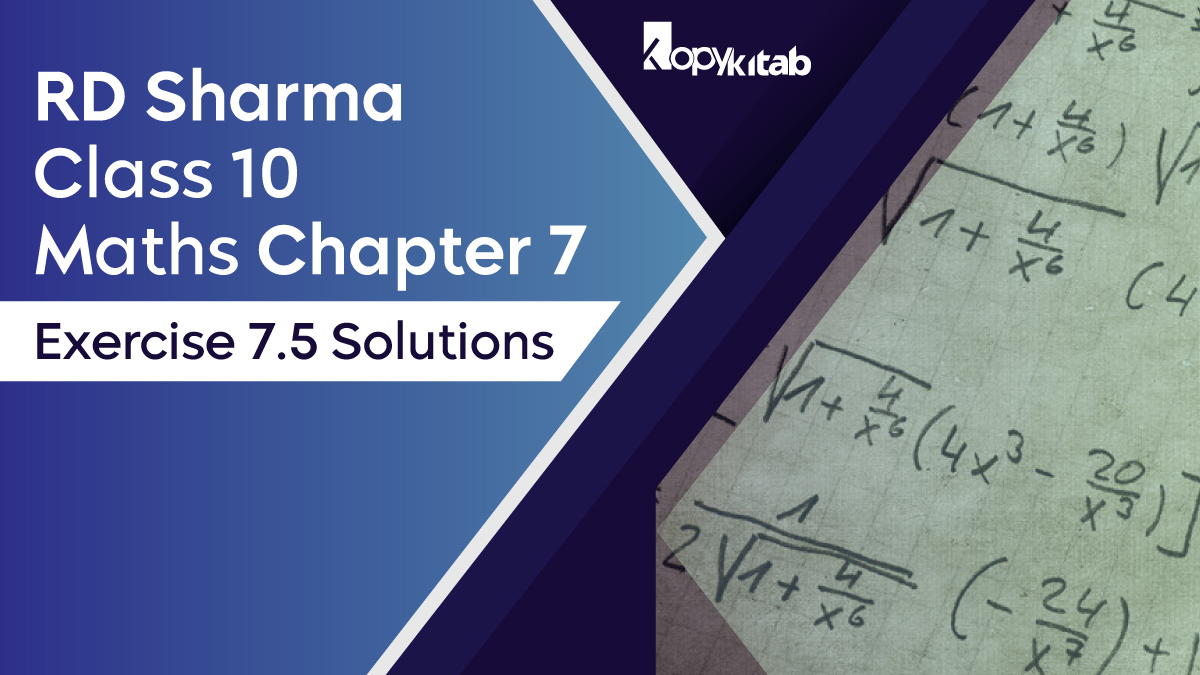RD Sharma Chapter 7 Class 10 Maths Exercise 7.1 Solutions ‘Triangles’ has made each and every chapter topic easy to understand language and step by step. Important concepts covered in this chapter are a triangle, triangle similarity criteria, proof of Pythagoras theorem, inverse Pythagoras theorem, and relevant examples and problems related to triangles. This chapter gives you an in-depth look at the fundamentals of a triangle and related concepts.
RD Sharma Chapter 7 Class 10 Maths Exercise 7.5: You have 12 questions. Questions 1, 2, 3, 7, 12 are based on the original proportional theorem. Questions 4, 5, 6, 9 and 10 are based on the Pythagorean theorem. Question 11 is a scenario-based question that focuses on the Pythagoras theorem.
Download RD Sharma Chapter 7 Class 10 Maths Exercise 7.5
RD SHARMA Solutions Class 10 Maths Chapter 4 Ex 4.5
Important Definition for RD Sharma Chapter 7 Class 10 Maths Exercise 7.5 Solutions
- Meaning Triangle
This section teaches you the meaning and various attributes of a triangle.
- Types of Triangles
This part of the chapter discusses various types of triangles which are based on the length of sides in a triangle and based on the angles of a triangle. On the basis the angles in a triangle, triangles can be classified into the acute-angled triangle, right-angle triangle and obtuse angle triangle. On the basis of the length of the sides of a triangle, triangles can be classified into the scalene triangle, isosceles triangle and equilateral triangle.
- Centres of the Triangles
This section of Chapter 4-Triangles, explains the centres of triangles and how they are formed. You will be taught about the incenter of a triangle, circumcenter of a triangle, the orthocenter of a triangle, and the centroid of a triangle. These concepts are well explained with relevant examples.
- Congruent Vs. Similar Figures
This portion of the chapter teaches you about the difference between congruent and similar figures. This will be discussed with the help of angles, sides, relevant examples, detailed explanation, and symbols.
- Similarity of Triangles
In this part, you will be taught how two triangles have the same corresponding angles and how two triangles have corresponding sides in the same proportion. Here you will understand the similarity of triangles on the basis of 4 criteria given below.
- Side-Side- Side (SSS) Similarity Criterion
- Angle Angle Angle (AAA) Similarity Criterion
- Angle-Angle (AA) Similarity Criterion
- Side-Angle-Side (SAS) Similarity Criterion
All the above criteria are explained with relevant examples and in details.
- Basic Proportionality Theorem
In this section, you are taught the Basic Proportionality Theorem that states if in a given Triangle a line is drawn parallel to any of the sides of the Triangle so that the other two sides intersect at some distinct point then it divides the two sides in the same ratio. The other name of this theorem is Thales Theorem. This chapter also throws light on the converse of the basic proportionality theorem.
- Pythagoras Theorem
This part of the chapter teaches about the Pythagoras Theorem. As per this theorem, in a right-angled triangle whose sides are P, Q and R and angle r is a right angle then PQ2+ QR2 =RP2. This theorem is also called as Baudhayan theorem.
RD Sharma Class 10 Maths Solutions Chapter 4-Triangles, also covers the Converse of Pythagoras Theorem, Similarity of two triangles made in a right-angle triangle and the laws of sine and cosines in a triangle which includes the law of sines and the laws of cosines.
Know more at the official website.
